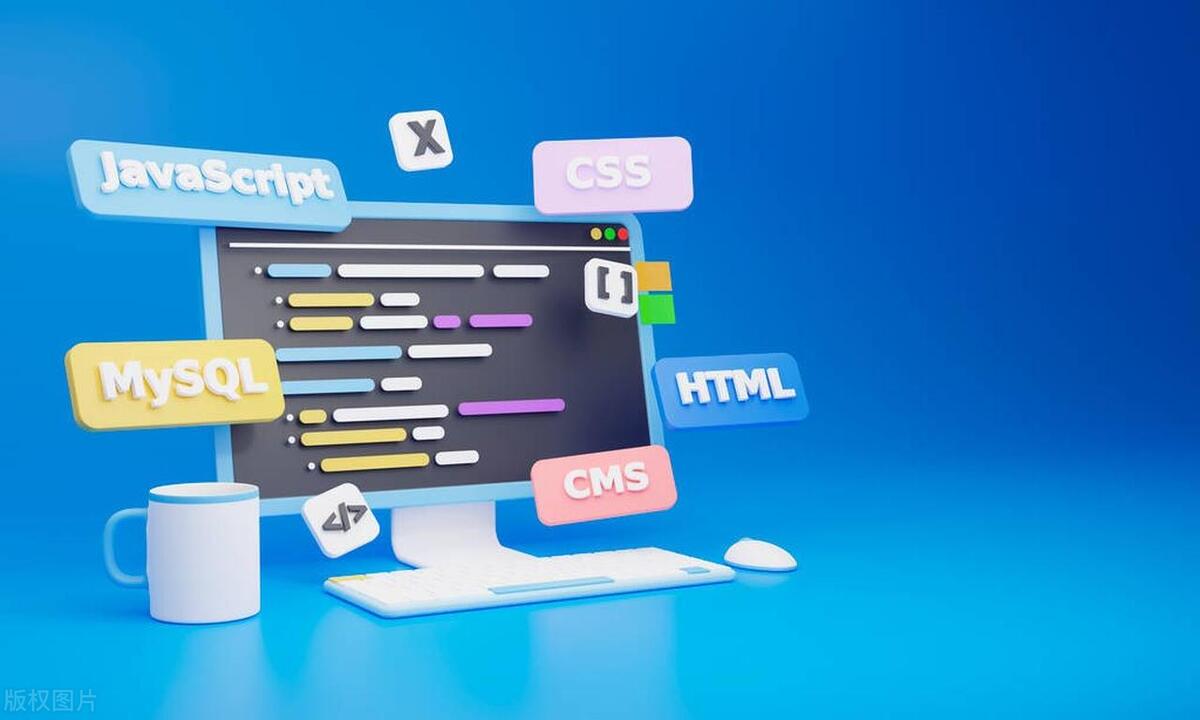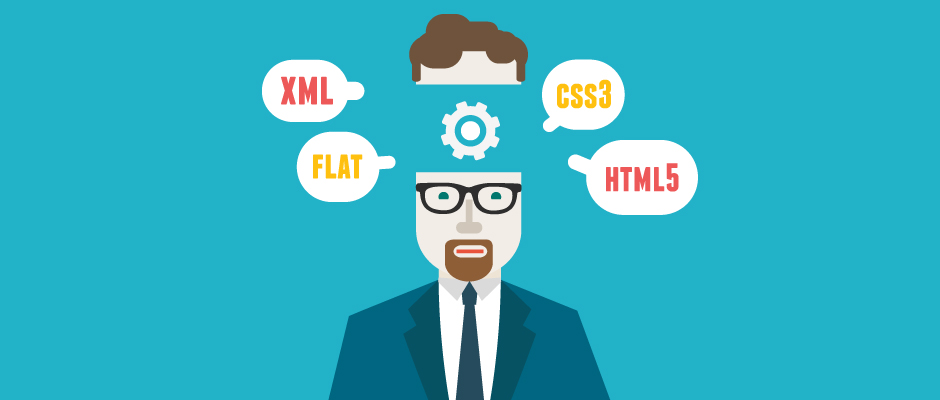 Web Front-end
Web Front-end
 Front-end Q&A
Front-end Q&A
 Creating Sticky Navigation Headers or Sidebars with CSS position: sticky
Creating Sticky Navigation Headers or Sidebars with CSS position: sticky
Creating Sticky Navigation Headers or Sidebars with CSS position: sticky
Jul 09, 2025 am 02:20 AMposition: sticky The key to implementing a sticky navigation bar or sidebar is to correctly set positioning properties and understand usage restrictions. 1. It must be used with top, bottom, left or right, and the parent container cannot have properties such as overflow: hidden, transform or filter; 2. When used in the navigation bar, z-index and background colors must be set to ensure visibility and readability, and pay attention to the hierarchical relationship of multiple sticky elements and content occlusion issues; 3. When implementing the sidebar, you need to set the top value and height: fit-content to prevent the screen from being full, and scrolling support should be added if necessary; 4. Pay attention to compatibility. Mainstream browsers have good support, but IE does not support it, and alternatives are required to avoid common style traps. Only by mastering these key points can you ensure sticky works as expected.

Using CSS's position: sticky to implement sticky navigation bar or sidebar is a practical and not difficult to implement. It allows an element to "stick" on the screen when scrolling a page, such as common top navigation or side menus. The key is to understand its usage conditions and limitations, otherwise it is easy to "how it doesn't take effect".

1. Basic grammar and necessary conditions
position: sticky looks simple, but must be used with top , bottom , left or right , otherwise it will fail. For example:

.sticky-nav {
position: sticky;
top: 0;
} After writing this way, .sticky-nav will be fixed to the screen when scrolling to 0px from the top.
But note:
- It must have a clear positioning value (such as
top: 0) and cannot just writeposition: sticky. - The parent container cannot be
overflow: hiddenortransform,filterand other attributes, otherwise sticky will be disabled. - The sticky element is positioned relative to the most recent scrolling ancestor element, rather than the entire page.
2. Common practices used on the navigation bar
The top navigation bar is the most common application scenario. You can put it at the top of the page so that it is always visible while scrolling:

<nav class="sticky-nav">...</nav>
.sticky-nav {
position: sticky;
top: 0;
z-index: 1000;
background: white;
} z-index is added to prevent being covered by other content, and the background color is to make the content readable (especially when scrolling).
In practice, you may encounter:
- When the page has multiple sticky elements, they are overwritten in turn
- The contents below the navigation bar may be blocked, you can use
margin-topto adjust the spacing.
3. How to achieve sticky effect in the sidebar
In addition to top navigation, the sidebar can also be fixed with sticky. Structurally, there is usually a left area plus the main content area:
<div class="container"> <aside class="sidebar">This is the sidebar</aside> <main class="content">Main content</main> </div>
The corresponding CSS can be written like this:
.sidebar {
position: sticky;
top: 20px; /* Start to fix at a certain distance from the top*/
height: fit-content; /* Prevent the screen height from being full*/
} This way, when the user scrolls the page, the sidebar stops at the right position and does not exceed the content height.
Tips:
- Add
max-heightandoverflow-y: autoto.sidebarto keep scrolling under long content - Pay attention to the layout width to avoid sticky elements affecting the main content layout
4. Compatibility and precautions
Although mainstream browsers support position: sticky , it is not applicable in older versions (such as IE). If you need to be compatible with these environments, you may have to use JavaScript to simulate or consider alternatives.
Some other places that are prone to pitfalls:
- Forgot to set
toporleft, resulting in invalid - The parent container has been set to
overflow: hidden, sticky is invalid - The scroll container is not the viewport itself (such as scrolling inside a div), and sticky behavior will be different
Basically that's it. The key to using position: sticky is to figure out the context and style limitations it depends on. It looks simple, but if the details are not handled properly, problems will be easily arise.
The above is the detailed content of Creating Sticky Navigation Headers or Sidebars with CSS position: sticky. For more information, please follow other related articles on the PHP Chinese website!

Hot AI Tools

Undress AI Tool
Undress images for free

Undresser.AI Undress
AI-powered app for creating realistic nude photos

AI Clothes Remover
Online AI tool for removing clothes from photos.

Clothoff.io
AI clothes remover

Video Face Swap
Swap faces in any video effortlessly with our completely free AI face swap tool!

Hot Article

Hot Tools

Notepad++7.3.1
Easy-to-use and free code editor

SublimeText3 Chinese version
Chinese version, very easy to use

Zend Studio 13.0.1
Powerful PHP integrated development environment

Dreamweaver CS6
Visual web development tools

SublimeText3 Mac version
God-level code editing software (SublimeText3)

Hot Topics
 What is the role of (formerly PortalVue) in Vue 3 for rendering content outside the current component's DOM hierarchy?
Jun 11, 2025 am 12:09 AM
What is the role of (formerly PortalVue) in Vue 3 for rendering content outside the current component's DOM hierarchy?
Jun 11, 2025 am 12:09 AM
Vue3 is used to render content outside the current component DOM structure. 1. It allows you to move elements such as modal boxes, prompt tools to other locations on the page to solve layout problems, z-index hierarchy and accessibility problems; 2. When using it, you need to wrap the target content and specify the target selector, such as; 3. Vue will physically move the corresponding DOM node to the specified position while maintaining responsiveness and event logic; 4. Common application scenarios include modal boxes, notification messages, tooltips and barrier-free content; 5. When using it, you need to ensure that the target element already exists, and pay attention to the style scope and dynamic logic processing. In short, maintaining the logical relationship of component tree through virtual references provides a concise solution for complex UIs.
 What are some strategies for managing CSS and styling at scale in a large Vue project?
Jun 10, 2025 am 12:10 AM
What are some strategies for managing CSS and styling at scale in a large Vue project?
Jun 10, 2025 am 12:10 AM
TomanageCSSandstylinginlargeVueprojectseffectively,adoptscopedstylesbydefault,establishaglobalCSSarchitecture,useconsistentnamingconventions,selectivelyleverageCSS-in-JSorutilitylibraries,enforceconsistencywithlinters,anddocumentdesigntokens.Beginwit
 How can CSS be used to implement dark mode theming on a website?
Jun 19, 2025 am 12:51 AM
How can CSS be used to implement dark mode theming on a website?
Jun 19, 2025 am 12:51 AM
ToimplementdarkmodeinCSSeffectively,useCSSvariablesforthemecolors,detectsystempreferenceswithprefers-color-scheme,addamanualtogglebutton,andhandleimagesandbackgroundsthoughtfully.1.DefineCSSvariablesforlightanddarkthemestomanagecolorsefficiently.2.Us
 What are some common techniques for vertically centering content using CSS?
Jun 12, 2025 am 10:27 AM
What are some common techniques for vertically centering content using CSS?
Jun 12, 2025 am 10:27 AM
Vertical centering content can be implemented in CSS in a variety of ways, the most direct way is to use Flexbox. 1. Use Flexbox: By setting the container to display:flex and in conjunction with align-items:center, vertical centering of child elements can be easily achieved; 2. Combination of absolute positioning and transform: suitable for absolute positioning elements, by setting top and left to 50% and then using translate (-50%,-50%) to achieve centering; 3. CSSGrid: Through display:grid and place-items:center, horizontal and vertical centering can be achieved at the same time. If only vertical centering is required, use align
 Can you explain the difference between em, rem, px, and viewport units (vh, vw)?
Jun 19, 2025 am 12:51 AM
Can you explain the difference between em, rem, px, and viewport units (vh, vw)?
Jun 19, 2025 am 12:51 AM
The topic differencebetweenem, Rem, PX, andViewportunits (VH, VW) LiesintheirreFerencepoint: PXISFixedandbasedonpixelvalues, emissrelative EtothefontsizeFheelementoritsparent, Remisrelelatotherootfontsize, AndVH/VwarebaseDontheviewporttimensions.1.PXoffersprecis
 How does in Vue 3 help manage asynchronous components and their loading states?
Jun 10, 2025 am 12:07 AM
How does in Vue 3 help manage asynchronous components and their loading states?
Jun 10, 2025 am 12:07 AM
SuspenseinVue3simplifieshandlingasynccomponentsbymanagingloadingstatesandintegratingerrorhandling.1.Itwrapsasynccontentanddisplaysfallbackcontentlikespinnersuntilthecomponentloads.2.YoudefineasynccomponentsusingdefineAsyncComponentandwraptheminaSuspe
 What are slots (default, named, scoped) in Vue, and how do they enable flexible component composition?
Jun 10, 2025 am 12:08 AM
What are slots (default, named, scoped) in Vue, and how do they enable flexible component composition?
Jun 10, 2025 am 12:08 AM
InVue,slotsareessentialforbuildingreusableandflexiblecomponents,andtherearethreemaintypes:default,named,andscoped.Defaultslotsallowaparenttopasscontentintoachildcomponentwithnospecificplacement,idealforsingle-sectioncomponentslikecards.Namedslotsenab
 How does Vue's error handling mechanism (e.g., errorCaptured hook, app.config.errorHandler) work?
Jun 10, 2025 am 12:12 AM
How does Vue's error handling mechanism (e.g., errorCaptured hook, app.config.errorHandler) work?
Jun 10, 2025 am 12:12 AM
Vue provides errorCaptured hooks and global error handlers to deal with application errors. 1. The errorCaptured hook can capture JavaScript errors in the child component tree, including errors in the life cycle hook and rendering function, receive error objects, error components and error location information, and can prevent errors from bubble upward by returning false. 2. Global error handling is configured through app.config.errorHandler, which is used to capture unexpected errors in the entire application, receive error objects, component instances and error type information. It is suitable for rendering functions, life cycle hooks, watcher callbacks and other scenarios, but does not automatically capture errors in event processing or asynchronous operations. 3.





